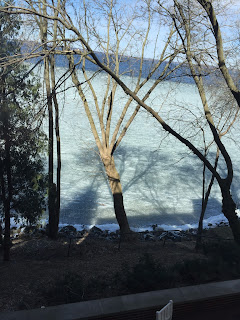Quinn Niego
March 12, 2017
2DS17
I visited Barbara Cooper's art gallery at Saint Xavier for my midterm assignment. The gallery consisted of her sculptures and a couple of her drawings. I chose the two sculptures above for this assignment. The first one is called "whorl" and the second one is called "link."
Barbara Cooper is known for using nature as a motivation to create art. She is fascinated by natural phenomena and the fluidity of natural designs and sculptures. She showed several natural photos that explained where she finds inspiration for creating her sculptures. She pointed out that nature is extremely detailed and she like to use its flow and unique patterns to create interesting pieces of representational art.
The first piece, "whorl," is named after the circular spirals that it implies. It is a relatively simple piece that can represent many natural occurrences. This sculpture is organic, but does have some direction to it if one looks at the flowing curve that is present. The whole piece is made out of the same type of wood that has been pieced together to create a curved whorl.
The second piece , "link," is named after the link that it creates towards the top. The top is a different material than the rest of the piece. This drags ones attention to the "link" that is created. This piece appears mostly organic, but not as organic as "whorl." This is because a complete circle is formed in the middle and the curves appear to be more pre determined.
Both pieces are inspired by nature and this is shown in their flowing and organic designs as well as the materials that were used to create them. They both have curves and overlapping pieces that together form the piece as a whole. They are both simple shapes, but also detailed because numerous wood pieces were used to compose each of them. I would say that "whorl" appears to be more abstractly created because of its simplicity and the variety of interpretations that the design can represent. On the other hand, "Link," seems more straightforward because it has a clearer shape and representation. Both pieces are unique and are structured carefully so that they do not look structured. Nature is organic and this is what Cooper relays to us through her art, specifically these two pieces.





















































